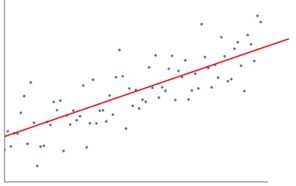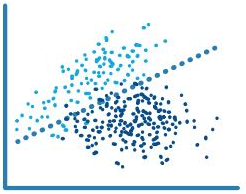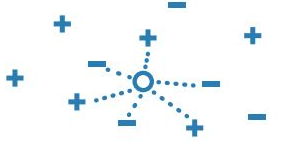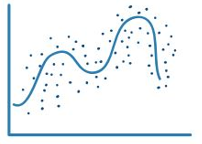Updated March 23, 2023
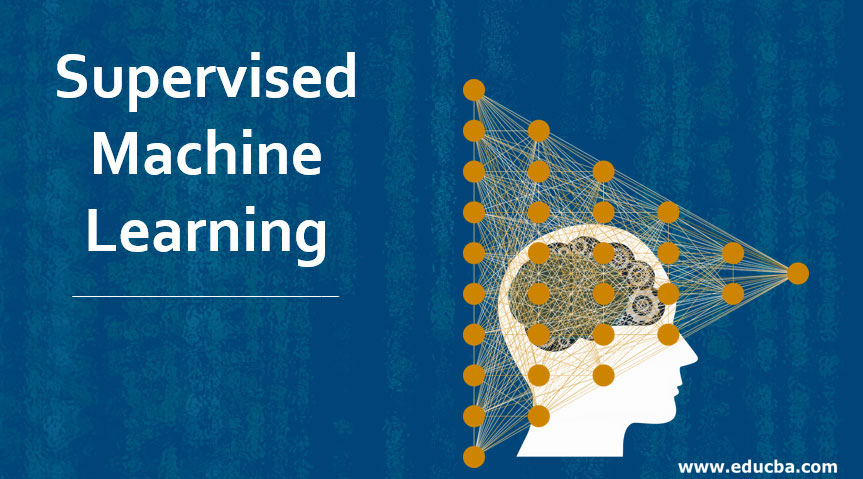
Introduction to Supervised Machine Learning
Supervised machine learning is a learning model in which we train the machine by input and what is the desired output. Basically, we will train the model with a set of input variables(x) and the corresponding output variables(y) and try to create a relation between them using functions such as Y = f(x). We made a machine to learn by using these parameters so that it can able to detect the more accurate output even for the new input parameters. So this type of learning of machines is called supervised machine learning and is practically the most used learning algorithm.
How Supervised Machine Learning Works?
In the supervised machine learning model, we will give a set of input data labels and corresponding output labels so that the model can learn from it and predict accurately when a new input is given. Basically, this is a model that will take known inputs and outputs and trains the model to predict accurately for future input data. This is like an algorithm learning from the input data labels which are like a teacher who supervises the learning of a student (here it is a machine).
As we already know the answer for a given input but we want a machine to predict the answer iteratively until we get the reasonable performance from the algorithm or model. During every iteration, it will predict the output, and based on that we will give feedback to the model or correct it if requires based on the prediction. During the algorithm training, it creates or defines rules between the input and output parameters. For example, we will train the model with handwritten digits with labels and their output labels when a new image is given with numbers in it, the model able to predict the accurate label.
Supervised machine learning uses two techniques classification and regression.
- Classification: It is like True or False statements for example whether an email is spam or not, whether a tumour is benign or not.
- Regression: It is predicting continuously like temperature prediction, prediction of output which is really like weight, money value on that day, trading prediction, etc.
There are many algorithms that will come under supervised machine learning using classification and regression techniques like linear regression, logistic regression, decision trees, random forests, and support vector machines, etc.
Supervised Machine Learning Algorithms
Below is the list of supervised machine learning algorithms:
1. Linear Regression
In linear regression, we will have a set of input variables that are used to determine a set of output variables. Let us say X is the education qualification and Y is the annual income, now we need to find the relation between them in form y = a+bx where a and b are coefficients which linear regression needs to find by drawing a line that passes through most of the data points. So that we can predict accurate output for the given output with less error.
2. Logistic Regression
In logistic regression, we classify the input data into two categories like True or False by drawing a line between them using a transformation function. Logistic regression function looks like h(x) = 1/ 1 + e^-x. This model is based on the probability of the class or other which is binary. It is mostly used for binary classification problems where we can separate the data by a single line and as the baseline for evaluating complex problems. Its probability is either 0 or 1; if it is 1 then it’s a default class. For example, predicting an Email is spam or not, becoming spam will be 1 and not is 0.
3. K Nearest Neighbor (KNN)
In KNN, it categorizes the objects based on the nearest neighbor in the dataset. It assumes an object nearest to it will be similar to the object and uses different methods to find the nearest neighbor such as Euclidean, cosine, Hamming distance, city block, etc. It can be best used when we want to have a benchmark learning rules algorithm, when there is no memory usage constraint, and when the prediction speed of the trained model is a low concern. It uses the entire dataset as a training set instead of splitting it into training and test data sets. When an output is required for a new dataset, the algorithm goes through the entire data set and finds k- nearest neighbor where k is given by the user.
4. Naive Bayes
In the Naïve Bayes regression technique, it calculates the probability of an event where a particular event has already occurred. Here event is a variable and already occurred event is a hypothesis and Bayes theorem is p(h/d) = p(d/h) * p(h)/p(d). It classifies new input data based on the high probability of its particular class. It is best used when we have a small dataset with more parameters, need a classifier that is easy to interpret, when we know that scenarios will occur which are not in the training dataset such as medical or financial applications, etc.
5. Non-Linear regression
In the non-linear regression technique, it is a statistical modeling technique where it helps to describe nonlinear relationships in experimental data where the model is parametric. Nonlinear refers to a fit function which is a nonlinear function of parameters such as y = b0 +b1x + b2x^2 where b0, b1, b2 are fitting parameters is a linear regression whereas nonlinear regression for the fitting parameters is y = (b0x^b1)/(x+b2). It is best used when data has more nonlinear tends which cannot be transformed into linear space.
Advantages and Disadvantages of Supervised Machine Learning
Here are the advantages & disadvantages of supervised machine learning:
Advantages:
Some advantages are given below:
- In this, we can easily understand what is happening compared to unsupervised learning.
- We can know how many classes are there in the model by seeing the data even before training.
- It is very useful for classification problems and no need to keep training data once training is done we can keep the required parameters in mathematical form.
- It can predict large numeric values from the given data set and corresponding labels.
Disadvantages:
Some disadvantages are given below:
- It cannot handle or solve the most complex problems/tasks in machine learning.
- It can predict only known but not unknown data like unsupervised learning.
- It cannot find the features on its own by forming clusters or by classification.
- It cannot give accurate results if the corresponding class is not in the training data set.
Conclusion
Finally, it’s all about supervised machine learning. So far we have seen what supervised machine learning is, how it works, different algorithms for supervised learning, and its advantages and disadvantages.
Recommended Articles
This is a guide to Supervised Machine Learning. Here we discuss the working, algorithms, advantages, and disadvantages of supervised machine learning. You can also go through our other suggested articles to learn more –
